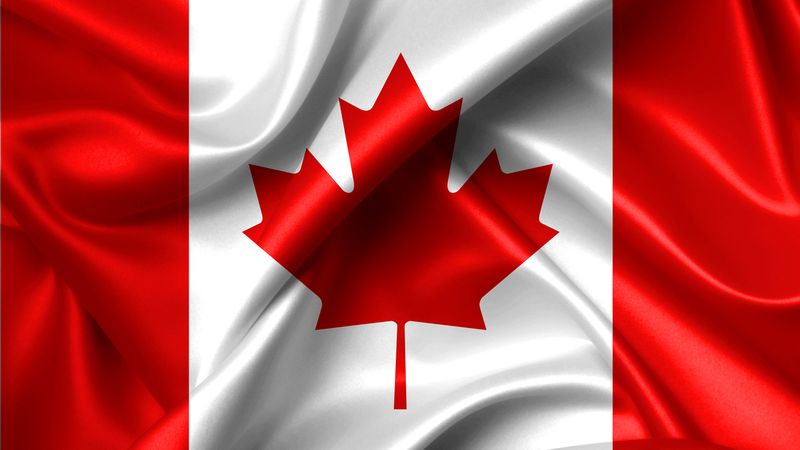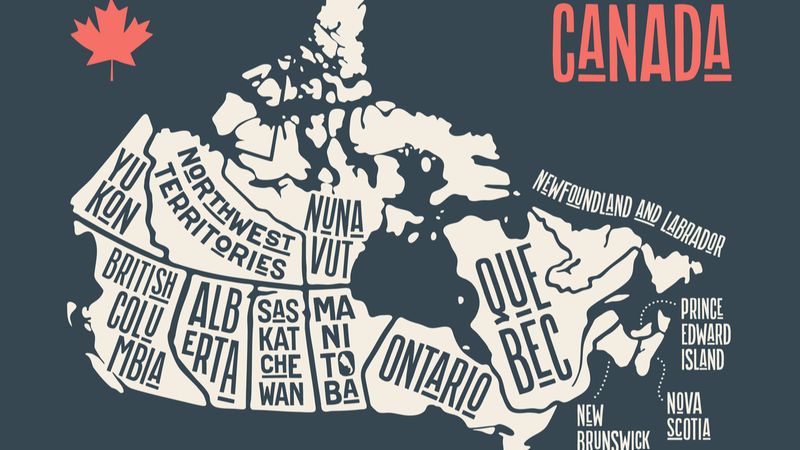If you want to immigrate to Canada, you may have a ton of questions on your mind, particularly about how the process of immigration works and the costs involved, not to mention the constant contemplation of whether you meet the criteria for a successful move to Canada. To prevent any confusion, the most frequently asked questions of two primary immigration programs, including the Federal Skilled Trades Program (FSTP) and the Federal Skilled Worker Program (FSWP) that are managed by the Express Entry immigration system, will be discussed in this article.
About Express Entry

It’s important to understand what Express Entry is before learning more about FSTP and FSWP.
Express Entry (EE) is an immigration system that was developed in 2015 to meet all of the future labour market needs in Canada. The process involves first checking whether you are eligible to apply for permanent residency in Canada, which is determined based on your score and then calculated by following a points-based system that allocates points to various factors surrounding your skills, experience, and personal details. Once you have received all of your scores and calculated them accordingly, you can see whether you are eligible to apply. This follows with ranking among other applicants to be considered.
FSWP and FSTP are two programs managed by Express Entry to simplify the process of immigrating to Canada. FWSP focuses on the skills that you as a professional possess, while FSTP is particularly designed for anyone in the foreign trade work industry that has experience in proper trade occupations to immigrate to Canada. FSWP and FSTP are both fast-track programs designated for skilled workers.
What is the FSWP?

As one of the two main Express Entry programs, the FSWP makes it possible for anyone that meets the necessary skill set that is in line with Canada's requirements to qualify for a relevant job. It was designed to get more Canadian residents with qualifications, skills, or work experience to contribute to Canada’s ever-growing economy. Even if you don’t possess the required skills or don’t rank high on the Express Entry system’s point-based assessment, you can improve your chances of ranking higher in the future by simply improving your skills, which is as simple as taking a language course, whether it be English or French, and submitting your improved results with your next application.
Another option is to learn and become proficient in certain skills in your field of expertise, which will present you with a much better chance to receive an Invitation to Apply (ITA) for permanent residency in Canada. One of the country’s main initiatives with the immigration program is to have more companies rendered in the country, which will also create more jobs for prospective Canadians. With continual economical, political, and social stability and growth, it’s no wonder that more and more people worldwide want to move to Canada.
The application process for how to apply for the FSWP program is one of the most frequently asked questions among countless others. All applicants that apply for this program must be able to prove that they meet the minimum requirements to obtain a visa, which includes having the required work experience.
All successful applicants for the FSWP will be able to get permanent residence, allowing them to reside and work in Canada
Requirements to Qualify for the FSWP:
- At least one year of full-time work experience in the past 10 years under a National Occupational Classification skill type (NOC) (0, A, or B);
- At least secondary education (high school pass);
- A minimum Canadian Language Benchmark (CLB) 7 in the 4 abilities in either English or French;
- Meet the necessary criteria to increase CRS points;
- English and/ or French language proficiency;
- Education level;
- Work experience in years;
- Age;
- A valid job offer (if applicable);
- Provincial nomination achieved; and
- Adaptability - Ask yourself whether you can settle and fit into Canada’s society.
What is the FSTP?

As the second program managed by the Express Entry immigration system, the Federal Skilled Trades Program (FSTP) is specifically designed for people with relevant work experience in eligible trade occupations to immigrate to Canada. Although this is a popular way to gain entry into the country and to get a job, you can also apply for Canadian residency as an unskilled individual. In this case, however, you will not be able to enter under Express Entry.
To check if you qualify for the FSTP as a skilled trade worker, you can refer to the federal government’s website. Once you have checked whether you meet all of the requirements, you can apply for the FSTP through the Express Entry system. With this, you will also require an active job offer or Canadian certificate of qualification to be considered as an eligible candidate.
You should always keep in mind that getting your Invitation to Apply (ITA) should be your number one priority, which is why you must ensure that your score ranks high enough to be considered as a prime candidate among the top applicants. If you rank high enough, you stand a better chance at gaining permanent residency, similar to the FSWP application.
Requirements to Qualify for the FSTP:
- A full-time job offer from a Canadian employer with a contract of at least 1 year, or a certificate of qualification from a provincial, territorial, or federal governing body;
- An adequate language proficiency score for English or French, which should be measured by the Canadian Language Benchmark (CLB) or the Niveaux de compétence Linguistique canadiens (NCLC) - Level 4 for writing and reading, and level 5 for listening and speaking;
- At least 2 years full-time work experience in the last 5 years;
- The ability to show that you meet specific job requirements of your skilled trade;
- You must be able to show that you have enough money to settle in Canada, with the only exception being that you have a valid job offer or can legally work in the country;
- Meet the necessary criteria to increase CRS points such as:
- Age;
- Work experience outside of Canada;
- Adaptability to live in Canada;
- Whether or not you have a sibling that resides in the country;
- Arranged employment and
- Whether you have a Provincial Nomination

- Create an Express Entry Profile
By fulfilling the FSWP eligibility criteria, you must create an Express Entry profile by providing your age, skills, language abilities, work experience, qualifications, and other relevant personal information. Once completed, your application must be confirmed by the Immigration, Refugees, and Citizenship Canada (IRCC), upon which you will be ranked in a pool of applicants. You will then be ranked according to the Comprehensive Ranking System.
- Improve Your CRS Score
If you rank among the highest applicants, you will be issued an Invitation to Apply (ITA) for permanent Canadian residency.
- Get an Invitation to Apply (ITA)
By receiving an Invitation to Apply (ITA), you will have 60 days to submit your complete and accurate application form with all of your supporting documents. Once you have completed this step, your application will be considered accepted, which is if, and only if you have submitted all of the documents on the checklist
- Get a Medical Examination and Security Clearance
The medical examination is mandatory for every applicant to check whether they have a medical condition. The examination includes blood tests, a physical exam, a urine test, and X-rays.
Differences Between FSWP and FSTP

Two terms to keep in mind to compare the two Express Entry programs are:
- Canadian Language Benchmark (CLB)
CLB is the Canadian standard that is used to describe and measure English language ability among immigrants (adult and prospective) that plan to work in Canada or apply for citizenship. The Niveaux de compétence linguistique canadiens is used to assess abilities in the French language. There are 4 language ability tests, which include writing, reading, listening, and speaking.
- National Occupation Classification (NOC)
A list of occupations in the Canadian labour market, which describes every job according to skill level and type.
For immigration purposes, these are the main job groups:
- Skill Type 0 (zero): Management jobs
- Skill Level A: Professional jobs that usually call for a degree from a university
- Skill Level B: Technical jobs and skilled trades that usually call for a college diploma or training as an apprentice
- Skill Level C: Intermediate jobs that usually call for high school and/or job-specific training
- Skill Level D: Labour jobs that usually give on-the-job training
| List of Requirement Differences | |
|---|---|
| FSWP | FSTP |
| Language skills | |
| CLB 7 (English or French) | CLB 5 (speaking and listening) and CLB 4 (reading and writing) |
| Type/ Level of work experience | |
| 0, A, and B - Canadian or foreign experience in skilled trade under the key groups of NOC B. | Canadian or foreign experience in a skilled trade under key groups of NOC B. |
| Amount of work experience | |
| 1 Year continuous within the last 10 years - A combination of part-time, full-time, or more than 1 job in a primary occupation. | 2 Years within the last 5 years - A combination of full-time or part-time occupation. |
| Job offer | |
| 1 Year continuous within the last 10 years - A combination of part-time, full-time, or more than 1 job in a primary occupation. | A valid job offer for full-time employment for at least 1 year, or a certificate of qualification in a skilled trade that has been issued by a Canadian provincial, federal or territorial authority. |
| Education | |
| Secondary education required, plus more FSW points for post-secondary education. | Not required. |
List of Requirement Differences
- Language skills
FSWP: CLB 7 (English or French)
FSTP: CLB 5 (speaking and listening) and CLB 4 (reading and writing)
- Type/ Level of work experience
FSWP: 0, A, and B - Canadian or foreign experience in skilled trade under the key groups of NOC B.
FSTP: Canadian or foreign experience in a skilled trade under key groups of NOC B.
- Amount of work experience
FSWP: 1 Year continuous within the last 10 years - A combination of part-time, full-time, or more than 1 job in a primary occupation.
FSTP:2 Years within the last 5 years - A combination of full-time or part-time occupation.
- Job offer
FSWP: Not required, but you can still get FSW points for having a valid job offer.
FSTP: A valid job offer for full-time employment for at least 1 year, or a certificate of qualification in a skilled trade that has been issued by a Canadian provincial, federal or territorial authority.
- Education
FSWP: Secondary education required, plus more FSW points for post-secondary education.
FSTP: Not required.
FAQs: The Process of Canadian Immigration

1. How do You Qualify for the Federal Skilled Worker Program (FSWP)?
There are several factors, including work experience, language capabilities, education, and proof of funds that play a role in your ability to meet the requirements to qualify for the FSWP.
2. How do You Qualify for the Federal Skilled Trades Program (FSTP)?
This program is for anyone that wants to become a permanent Canadian resident. The FSTP only applies to people that qualify for skilled trade, and to meet the minimum requirements, must have the skilled worker experience, education, language abilities, and must be open to an assessment from the relevant province or territory to meet the different requirements for the skilled trades industry. More specific requirements can be found on our most frequently asked questions guide.
3. How Can You Increase Your Comprehensive Ranking System (CRS) Score?
Your CRS score can be improved by reviewing and improving the following factors:
- Provincial Nomination - 600 points
- Core human capital factors - 600 points
- Offer of employment - 50-60 points
- A spouse or common-law partner
- Skill transferability
- Previous Canadian study experience
- A sibling with Canadian citizenship that resides in
- Previous Canadian study experience
- French and English proficient abilities - 150 points
A New Future Awaits You

While immigrating to Canada may only seem like a dream, for now, there is much to learn and do that can get you to live in one of the world’s richest and most opportunity-filled countries in the world.




